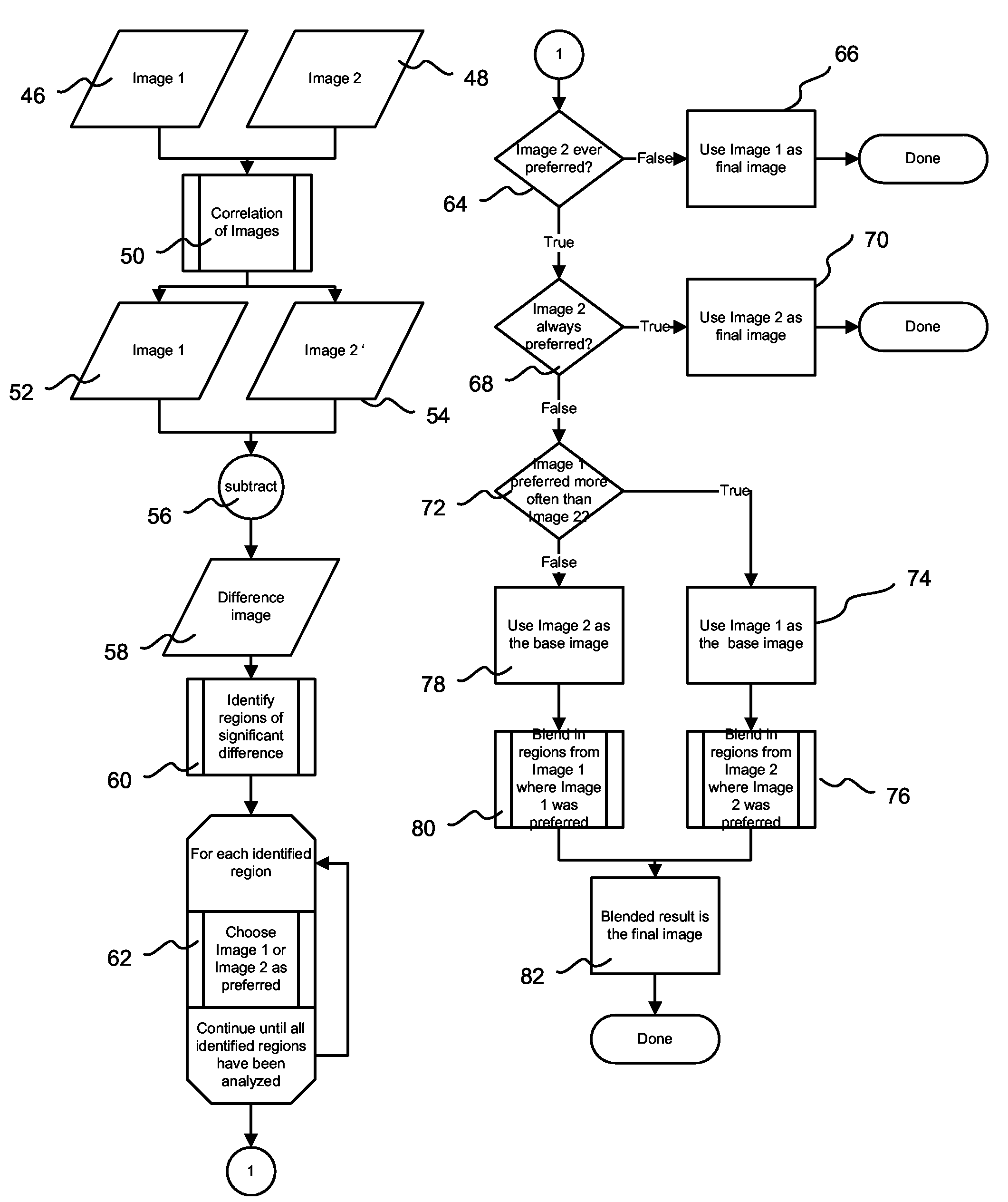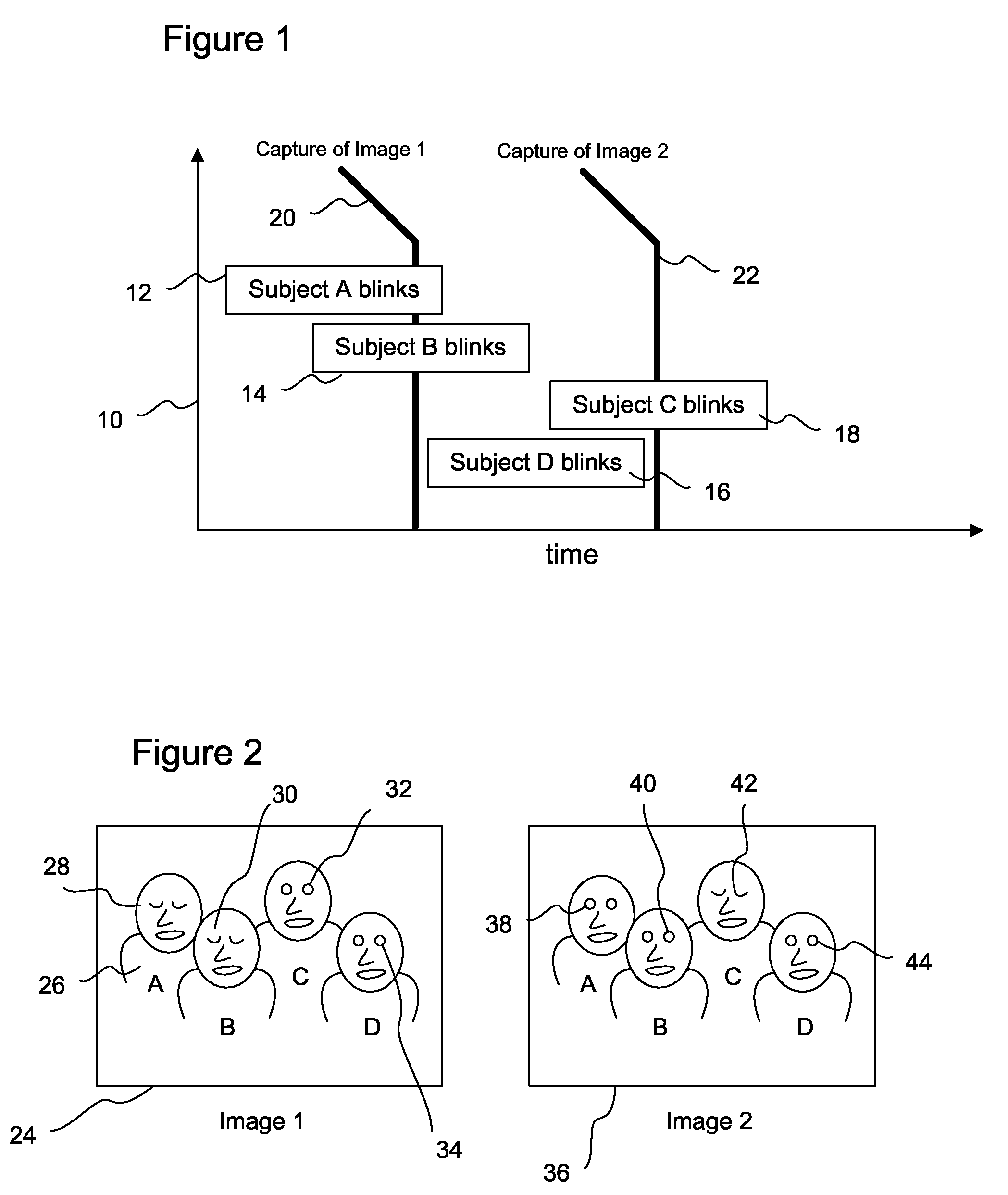Elimination of blink-related closed eyes in portrait photography
a portrait and closed eye technology, applied in the field of digital photography, can solve the problems of requiring extra time and effort on the part of the photographer and the subject, and achieve the effect of reducing the number of closed eyes
- Summary
- Abstract
- Description
- Claims
- Application Information
AI Technical Summary
Benefits of technology
Problems solved by technology
Method used
Image
Examples
Embodiment Construction
[0015]To illustrate the invention, a specific case is presented in detail. In FIG. 1, the timing diagram 10 shows a sequence of events that happens during the time that a camera (not shown) is capturing an image of several subjects 26. The camera is configured to automatically capture two images in quick succession when the shutter release button (not shown) is activated. At the time that first image is captured 14 Subject A 12 and Subject B 14 are both blinking. A specified period of time passes before the second image is captured 22. The time between capture events is designed to be just longer than the longest expected time it takes for the subjects to blink. Note that Subject D initiates and completes a blink cycle 16 in the time between the capture of the first image 20 and the capture of the second image 22. During the capture of the second image 22 Subject C 18 is blinking.
[0016]FIG. 2 is a depiction of the two captured images corresponding to the events of FIG. 1. The first ...
PUM
 Login to View More
Login to View More Abstract
Description
Claims
Application Information
 Login to View More
Login to View More - R&D
- Intellectual Property
- Life Sciences
- Materials
- Tech Scout
- Unparalleled Data Quality
- Higher Quality Content
- 60% Fewer Hallucinations
Browse by: Latest US Patents, China's latest patents, Technical Efficacy Thesaurus, Application Domain, Technology Topic, Popular Technical Reports.
© 2025 PatSnap. All rights reserved.Legal|Privacy policy|Modern Slavery Act Transparency Statement|Sitemap|About US| Contact US: help@patsnap.com



